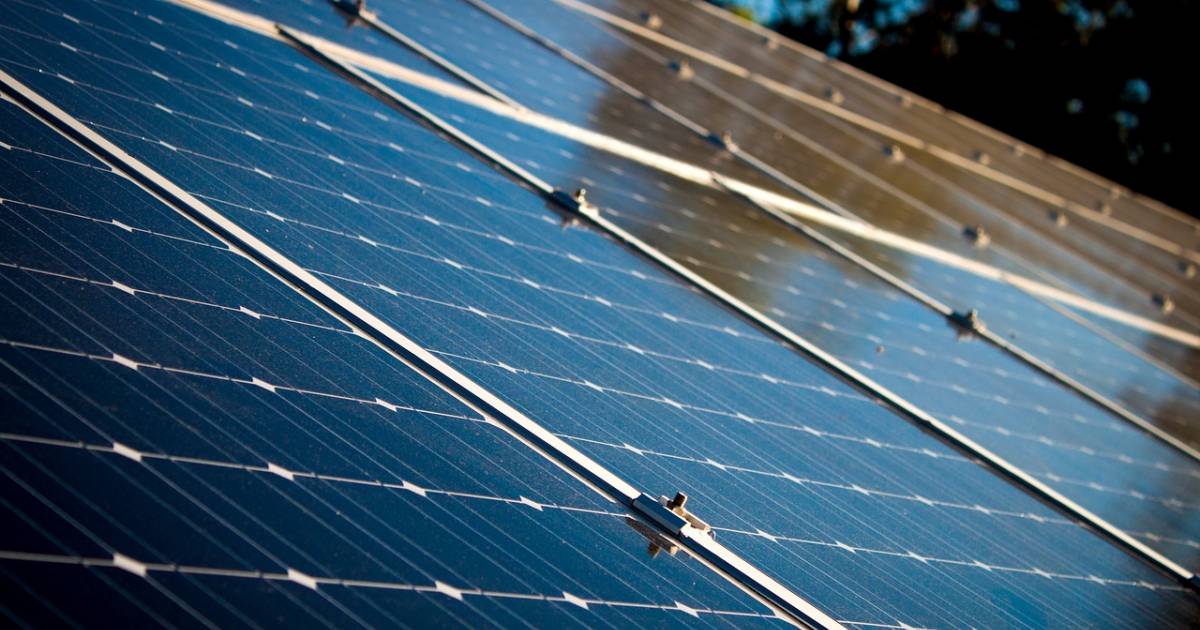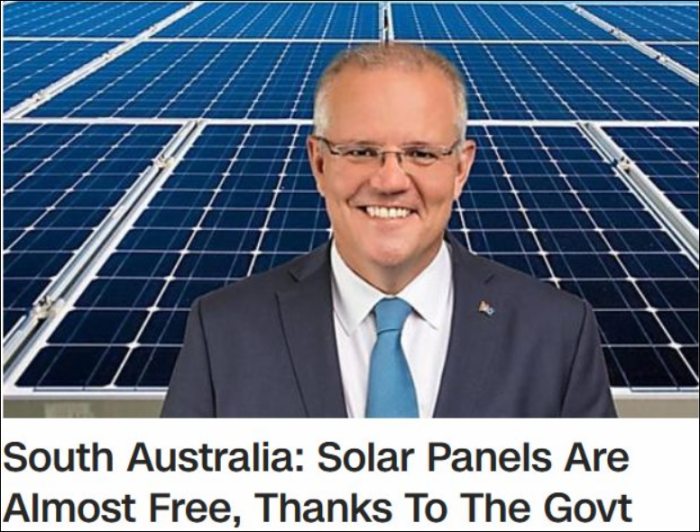
Over-promising and under-delivering isn’t a great way to win friends and influence people. For even crap solar to be “almost free”, it would need to be particularly crappy to the point of not being installed.
Imagine you’re a household that’s doing it pretty tough – as many Australian households are at the moment. You’re out on the web and you see this ad:
Ignore the location – whatever state you’re in would have been reflected in the ad.
Curiosity piqued (unless you really dislike our Prime Minister) and with hope building, you click on the ad. It takes you to a page again proclaiming that Australian homeowners are paying next to nothing for solar panels. You’re then urged to click on a button to see if you “qualify” for the government subsidies available.
This kicks off a process to lure you in further for getting quotes for a solar power system. And you can be guaranteed the quotes you’ll receive won’t be “almost nothing”. Even if buy now, pay later so-called “interest-free” finance arrangements are involved, you’ll still be paying – and a significant amount.
Over-promising + under-delivering = disappointment, frustration and future suspicion. That’s not good for anyone.
What Do Solar Systems Cost In 2021?
It’s true that a generous subsidy available nationally exists – popularly referred to as the “solar rebate” – that can knock thousands off the up-front cost of a solar power system. In Victoria, there’s also the Victorian solar panel rebate. But this still won’t bring the cost to “almost nothing”.
The following is the range you can generally expect to pay for a system with good components installed by a company that cares about its work, after the nationally available subsidy.
- 3kW: $3,500 – $5,000
- 5kW: $4,500 – $8,000
- 6.6kW: $5,000 – $9,000
- 10kW: $8,000 – $12,000
For Victorians, the price range will be cheaper given the additional subsidy there (which knocks off up to another $1,850), and prices for solar are also generally cheaper in Perth. The upper end of the ranges are for systems based on top-quality components installed by particularly fastidious professionals.
The Victorian and Perth scenarios aside, much under the lower end of the price ranges and the system/installation may well be of dubious quality.
The Very Good News
Finding the cash can be a challenge, but if you’re able to manage it and assuming your circumstances are suitable – a good installer won’t try to sell you a system if they aren’t – you’ll see a pretty rapid payback on your investment and then continue to reap financial benefits for many years after.
Simple payback will vary depending on the installation location and how you use electricity. A good way to get an idea is to use SQ’s solar calculator – and you don’t need to provide any personal details to access it.
Australians don’t need to and shouldn’t be subjected to misleading spiels to lure them into getting solar quotes. Solid information on installing solar and the benefits it can provide speaks for itself.


 RSS - Posts
RSS - Posts



How can they be free when the Aussie taxpayer is picking up 50% of the tab? They wouldn’t be free even if our low income earners were free riding the rest of us by paying for 100% of the purchase and installation. If there’s public money involved then it ain’t free. Somebody’s paying.
Interesting article… I’ve found that with solar panels in long-term, you always get something back. The investment paybacks AND the renewable energy definitely adds up to a total win-win scenario. Can’t really go wrong. The solar panel calculator is the most reliable tool.